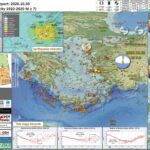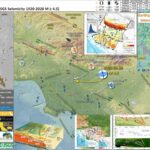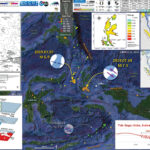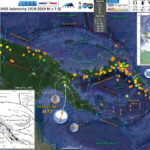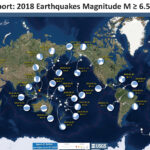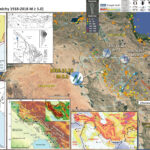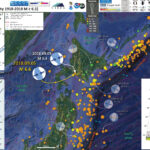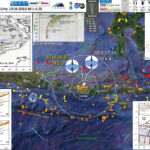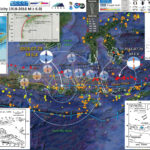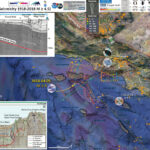I awakened to be late to attending the GSA meeting today. I had not checked the time. 7am is too early, but i understand the time differences… As i was logging into Zoom, my coworker emailed our Tsunami Unit group…
Earthquake Report: Southern California
Late last night there was a sequence of earthquakes in southern California. The mainshock is a M 4.5 earthquake. https://earthquake.usgs.gov/earthquakes/eventpage/ci38695658/executive This temblor was widely felt across the southland (including by my mom, who was warned by earthquake early warning). This…
Earthquake Report: Halmahera, Indonesia
Well, yesterday I was preparing some updates to the Ridgecrest Earthquake following my field work with my colleagues at the California Geological Survey (where I work) and the U.S. Geological Survey. We spent the week documenting surface ruptures associated with…
Earthquake Report: Papua New Guinea
Earlier today, there was an intermediate depth beneath eastern Papua New Guinea (PNG). With a magnitude M = 7.2, this is one of the largest earthquake so far in 2019. Here is the USGS website for this earthquake. Today’s earthquake…
Earthquake Report: 2018 Summary
Here I summarize Earth’s significant seismicity for 2018. I limit this summary to earthquakes with magnitude greater than or equal to M 6.5. I am sure that there is a possibility that your favorite earthquake is not included in this…
Earthquake Report: Iran
This morning (my time) there was a possibly shallow earthquake in western Iran with a magnitude of M = 6.3. This earthquake occurred in the aftershock zone of the 2017.11.12 M 7.3 earthquake. Here is my report for the M…
Earthquake Report: Hokkaido, Japan
Following the largest typhoon to strike Japan in a very long time, there was an earthquake on the island of Hokkaido, Japan today. There is lots on social media, including some spectacular views of disastrous and deadly landslides triggered by…
Earthquake Report: Lombok, Indonesia: Update #1
Yesterday morning, as I was recovering from working on stage crew for the 34th Reggae on the River (fundraiser for the non profit, the Mateel Community Center), I noticed on social media that there was an M 6.9 earthquake in…
Earthquake Report: Lombok, Indonesia
Earlier today there was a shallow M 6.4 earthquake with an epicenter on the island of Lombok, Indonesia. With a hypocentral depth of about 7.5 km, this size of an earthquake can be quite damaging. The USGS PAGER estimate of…
Earthquake Report: Channel Islands Update #1
Well well. There was lots of interest in this M 5.3 earthquake offshore of Ventura/Los Angeles, justifiably so. Southern California is earthquake country. Here is an update. There was lots of information that I was trying to incorporate and I…

